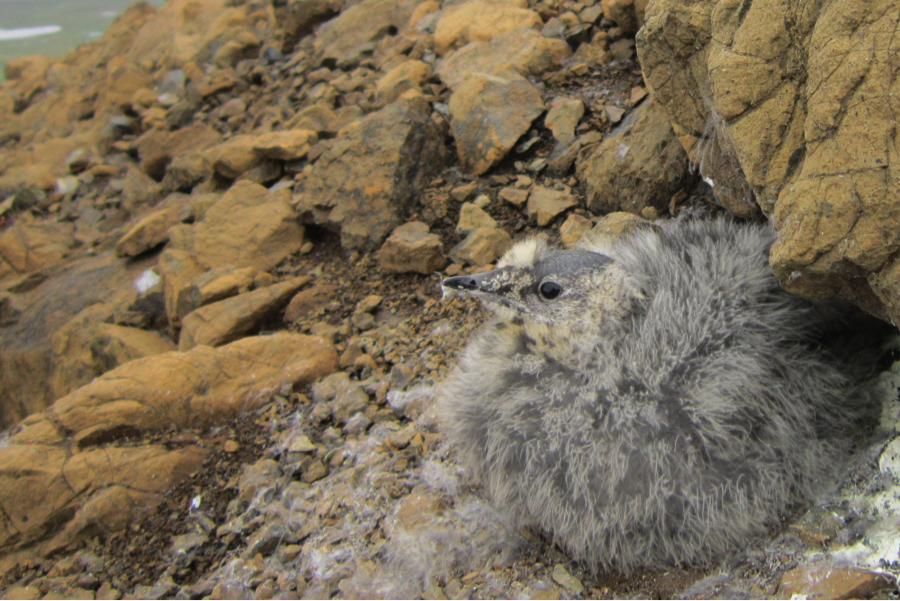Trail Cameras (also known as game cameras) are small, motion-triggered, weatherproof cameras.
They can detect wildlife while you’re not around!
We’ve all seen photos from trail cams that have captured images of secretive species such as foxes, raccoons, and even mountain lions, walking though people’s backyards!
Hunters and wildlife watchers often use trail cameras, but many wildlife biologists are also using them to study species that are hard to observe in person.
For example, cameras have been successfully used to collect information about the chick diet and breeding success of golden eagles that breed on steep cliffs in nests that are really hard to look into without climbing and lots of disturbance (Harrison et al. 2019).
Trail cams have also been used to study seabirds.
The Kittlitz Murrelet belongs to the Auk family (same family as the puffins, murres, and auklets), and it is one of the least known seabirds in the world.
Unlike most Auks that breed in huge colonies that are relatively easy to study, the Kittlitz Murrelet nests in solitary on rocky mountaintops. These nests are spread far (often miles) apart and are easy to disturb, and until recently very little was known about their breeding behavior.

Can you see the egg? Trail camera set up at a Kittlitz murrelet nest (USFWS Kodiak NWR).
Researchers hiked for miles searching for Kittlitz Murrelet nests in the mountains on Kodiak Island, Alaska. Trail cams were set up at each nest site, and these cameras successfully collected data on incubation behavior, breeding success, chick feeding rates, and even chick diet identification (Lawonn et al. 2018). See photo of the fluffy Kittlitz murrelet chick above (USFWS Kodiak NWR).
These small cameras have given us an incredible insight into the breeding behavior of these amazing seabirds. Check out these great short video links about the project background, fieldwork, and discoveries.

